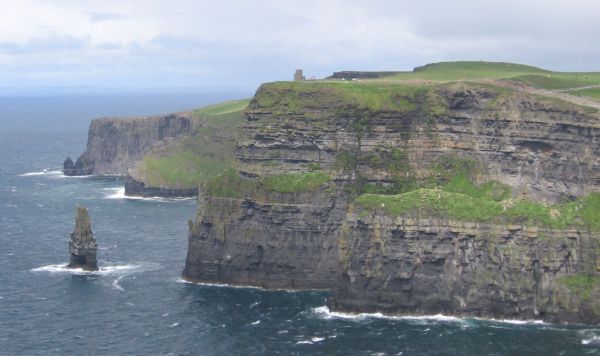
Here are some pictures from our May 2006 trip to Ireland.
We were on the West coast of Ireland, about midway up, not far from the famous Cliffs of Moher, which we hiked along one day.

We spent a full week in the small fishing and resort village of Ballyvaughan.
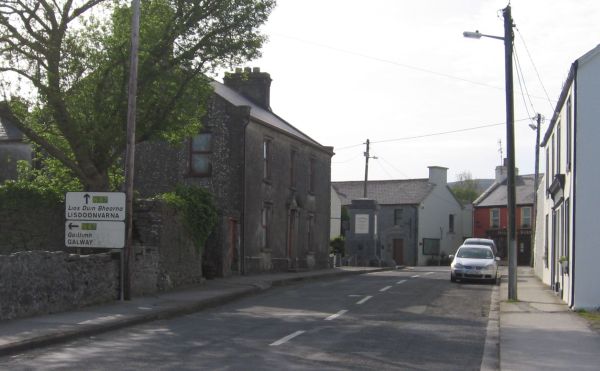
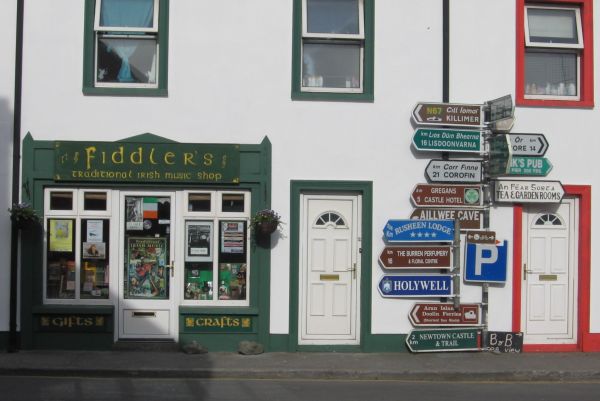
That's in an area called the Burren, where the bedrock is all limestone. It's been grazed heavily for thousands of years, so the rock is covered only with a thin layer of grass, and it's actually bare on the hilltops.
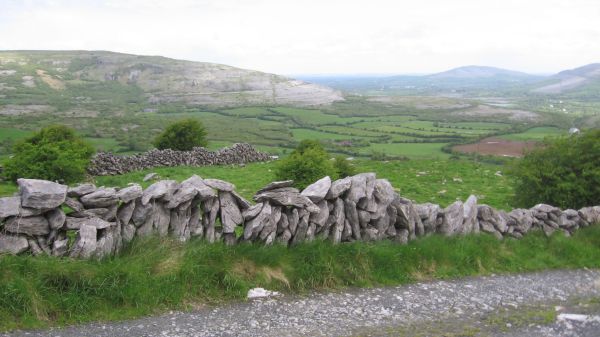
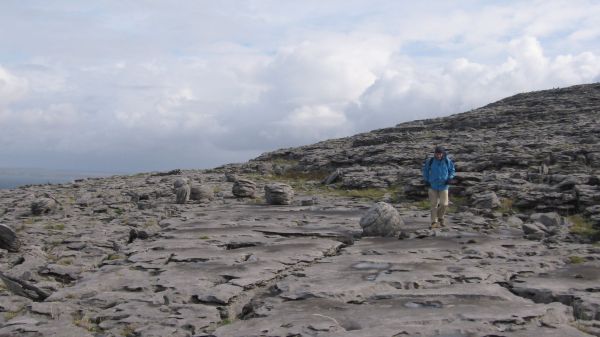
Where the rock is bare, the weak acidity of normal rain has eaten away at the natural hairline cracks, opening up fields of cracks called grikes.
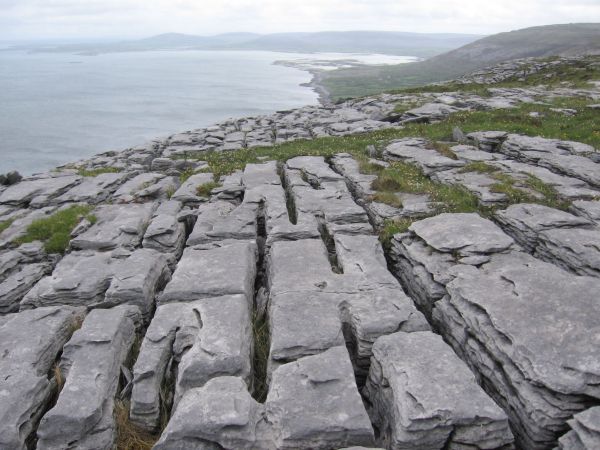
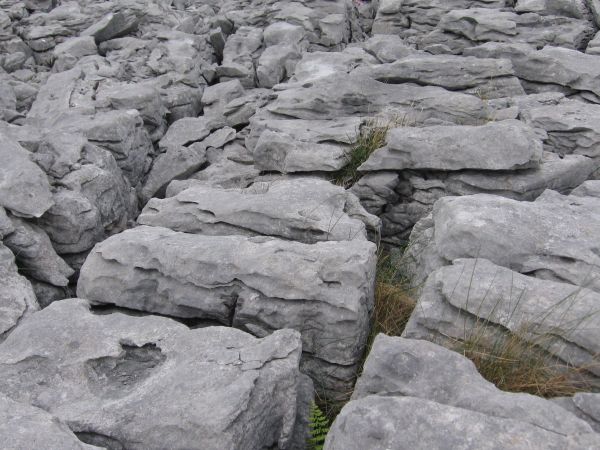
The water carves fascinating shapes into the rock, which are wonderful to watch while you're hiking (when you have to be looking down at your feet anyway).
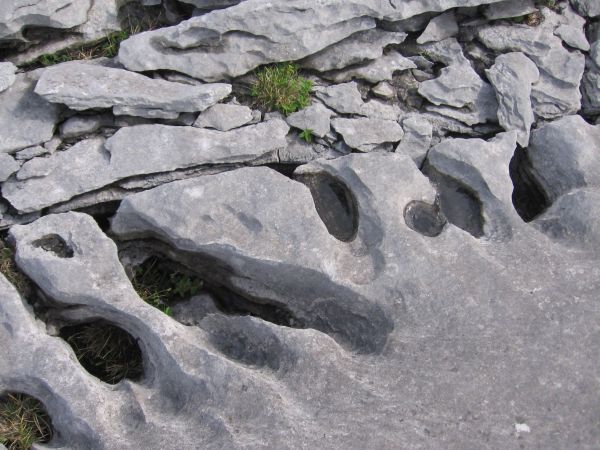
And wild flowers make good use of the cracks, too, as you can see in this picture from down by the shore.
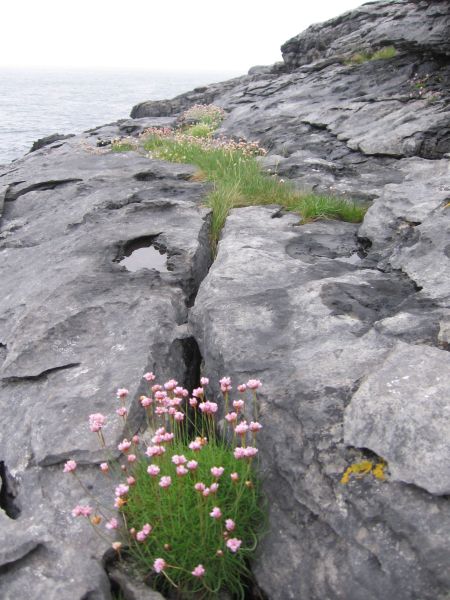
On the top of most hills, you find cairns that date back to the Stone Age.
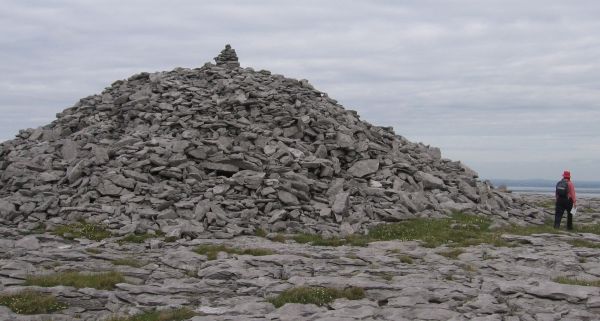
And at various places on the hills, you find megolithic tombs. The portal tombs or dolmens, which date back to Neolithic times, are the most dramatic.
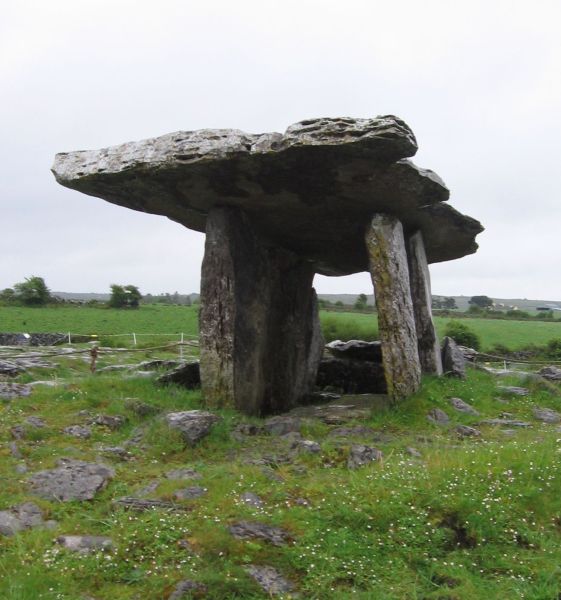
Wedge tombs, I believe, date from a slightly later period. (Note the cows in the background of the first shot; that field happened to have cows in it.)
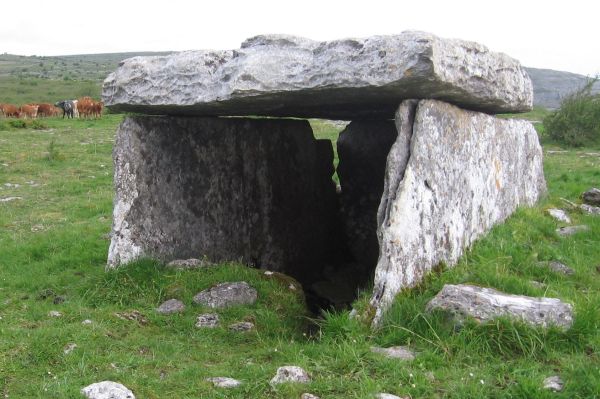
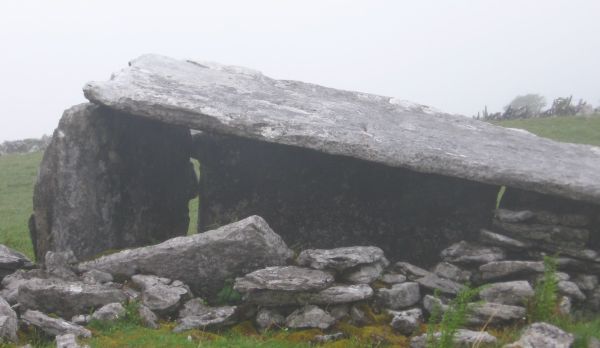
The Burren also has a lot of circular forts, that date from the Iron Age (the Celtic period).
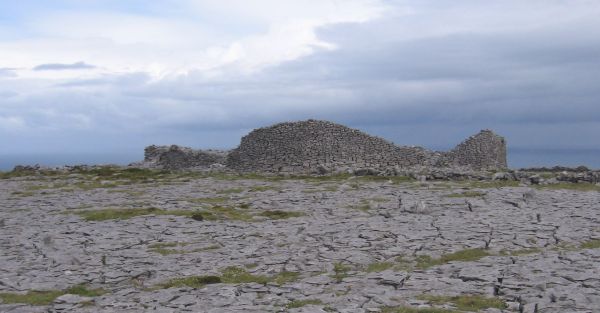
Here's one that was built on the edge of a cliff, with three concentric semi-circular walls.
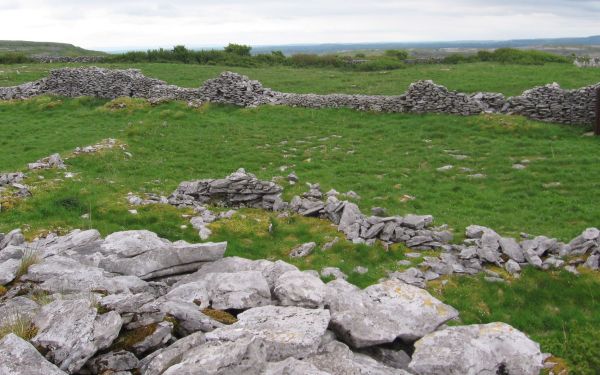
And here's ring fort that was built of earth, rather than stone.
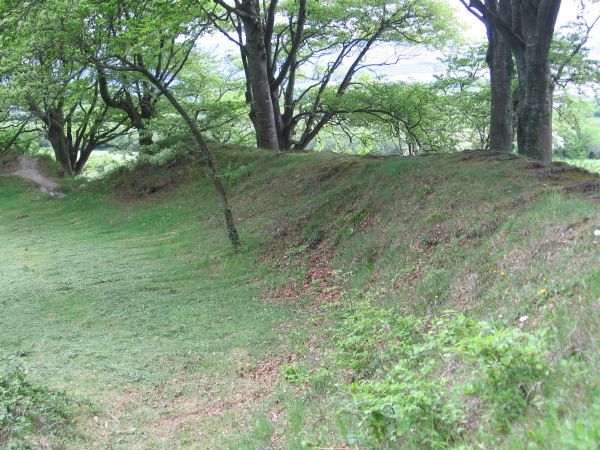
Sadly, hazel scrub is beginning to spread over the Burren, perhaps because farmers are not keeping their cows out on the high pastures as much. The locals are thinking about how to control it.
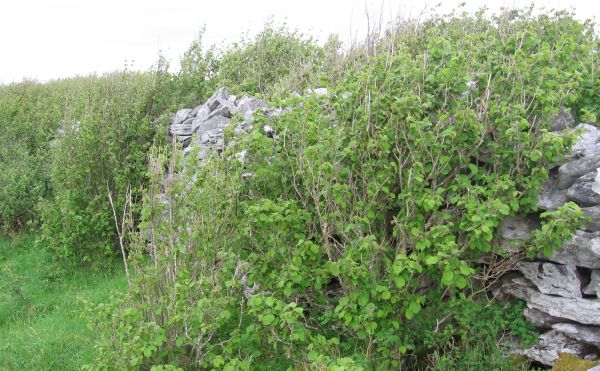
The Burren also has ruins from the early Christian era, including some high crosses, which were originally brightly painted billboards at crossroads, where outdoor services were held.
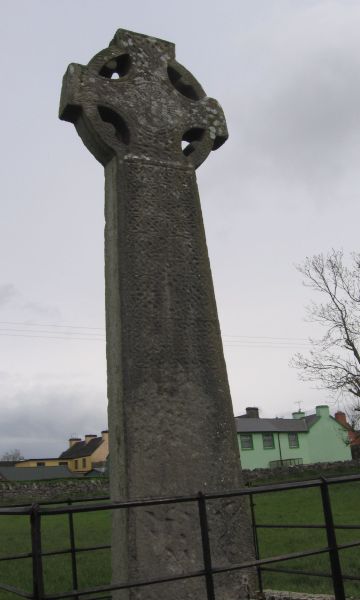
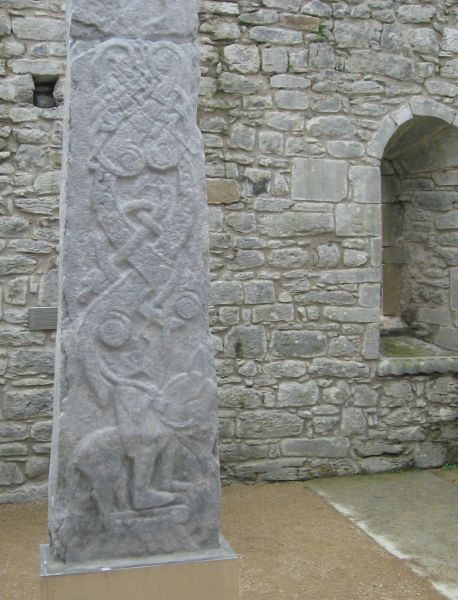
In later Christian times, the churches included carved pillars.
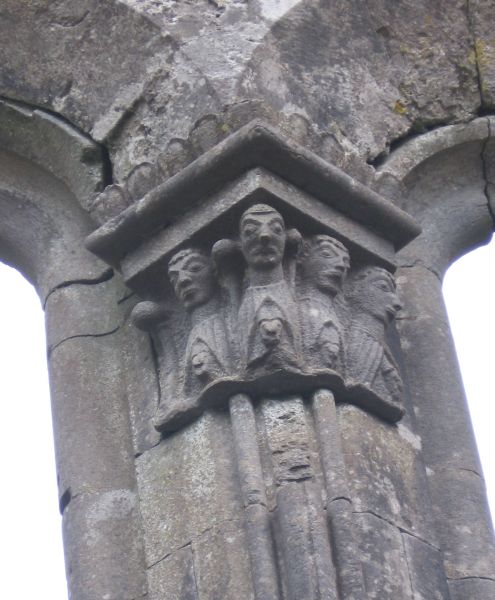
On our way to the Burren, we saw the Christian-era ruins at the Rock of Cashel, which include one of the defensive round towers that became common in medieval times. The tower entrance is 15 feet above ground, reached by a ladder.
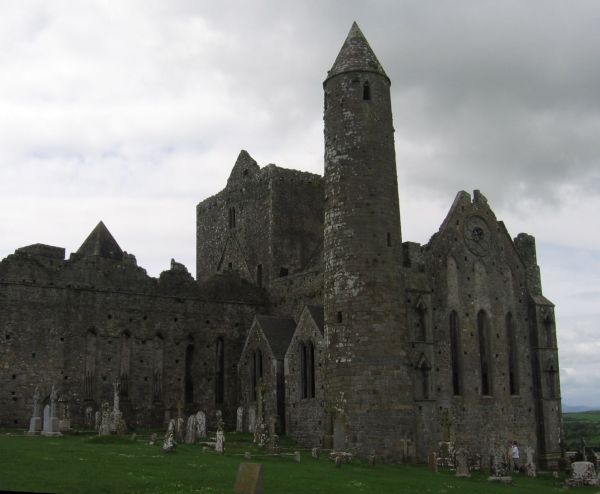
In a field next to the Rock of Cashel is this ruin of a medieval abbey.

On our way to the Burren, we also saw some much older ruins, including this stone circle from Lough Gur.
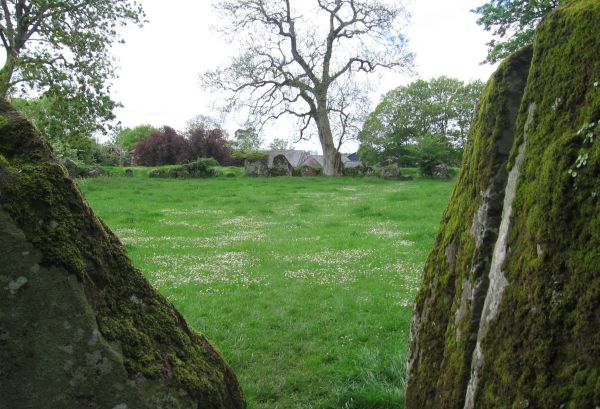
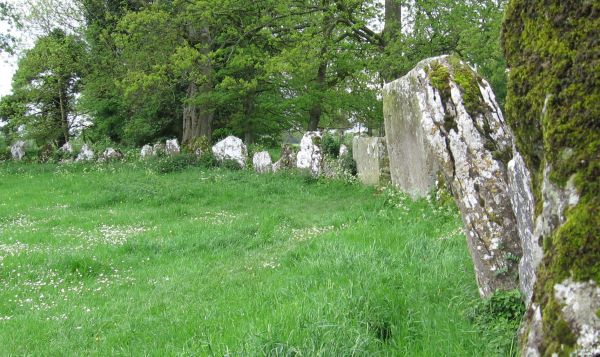
You can also find lots of holy wells, which go back into prehistoric times, but people still visit them, often tying shreds of cloth that belong to the person they're praying for.
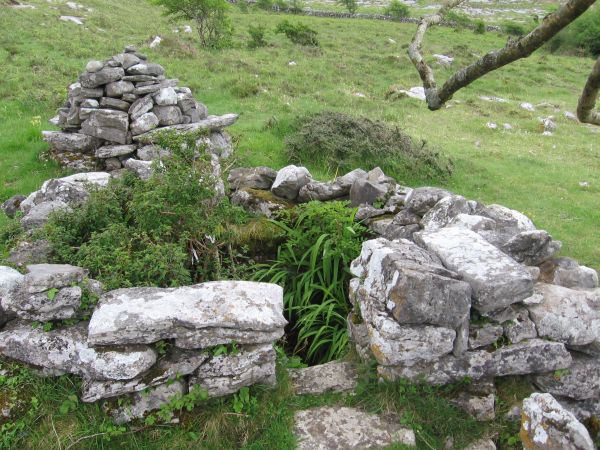
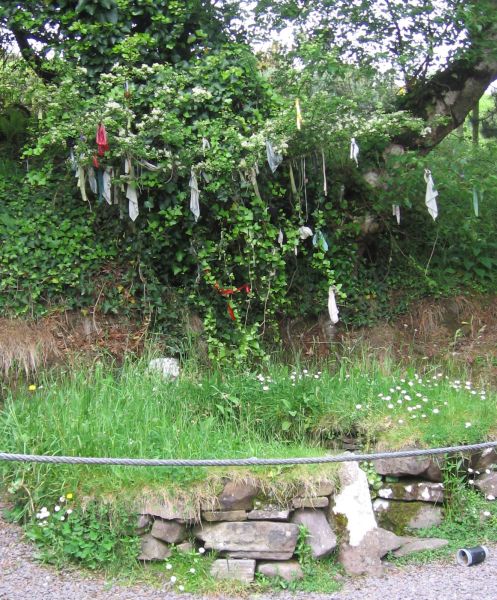
We also took one day during our week in the Burren to drive all the way across to the east side of the country, where there is a famous cluster of Neolithic passage tombs. These are huge mounds, surrounded by carved coping stones. There's a passage into the center of the mound, where cremated remains were placed.
The tomb at Knowth alone includes more than half of all the Neolithic art known in all of Europe.
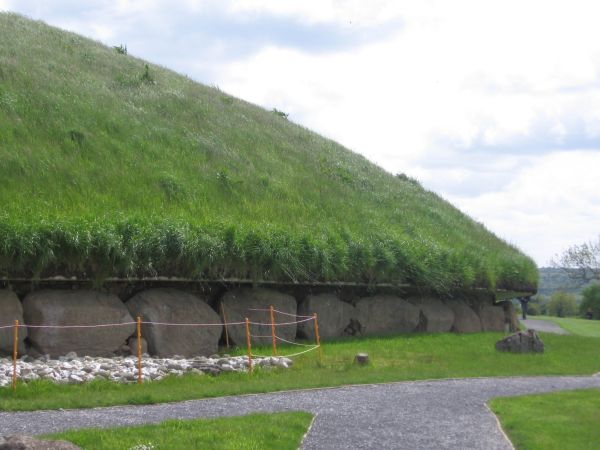
At Newgrange, you can actually walk down the inside passage. The Neolithic folks were apparently entranced with the brightness of quartz, which they brought from a great distance, and perhaps used to line the front of the tomb. (This one picture isn't ours; we got it off the web.)
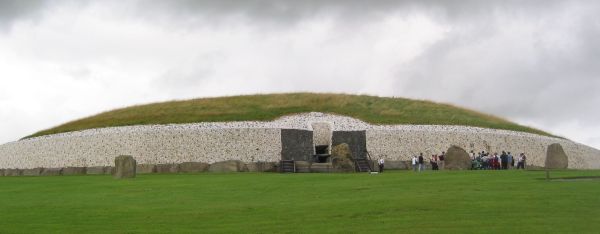
This closeup of the entrance to Newgrange shows the carved entrance stone, that folks would have had to crawl over, and the window over the entrance, that allows the sun at sunrise on the winter solstice to shine all the way down the passage into the central chamber.
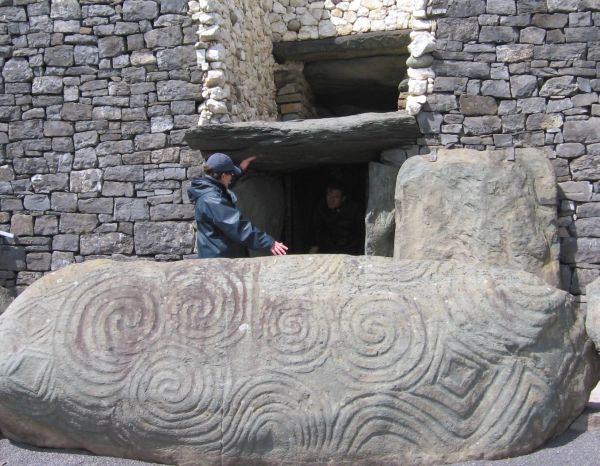
After our week in the Burren, we drove south to Kerry, an area of beautiful mountains and lakes.
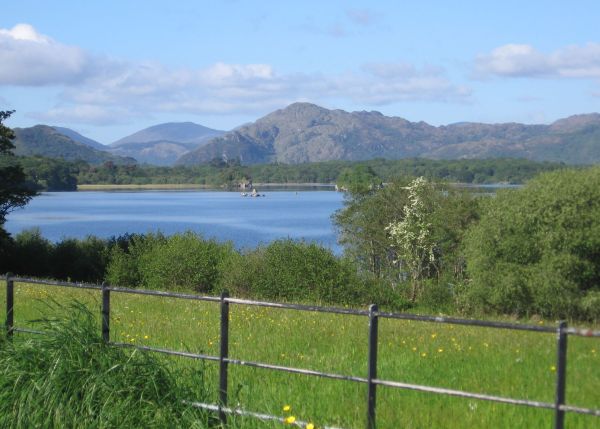
One day, we drove from Kerry out to the Dingle peninsula, where you can see lots of examples of 'beehive huts', prehistoric structures built all of stone. Each round of stones is inset some, until the opening is small enough to cover with a single stone. Each individual stone is also angled outwards, so that the rain runs off.
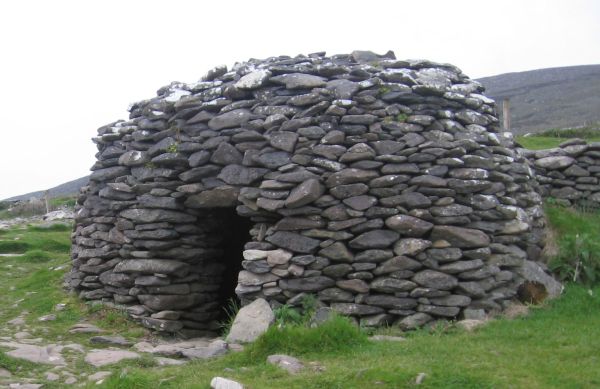
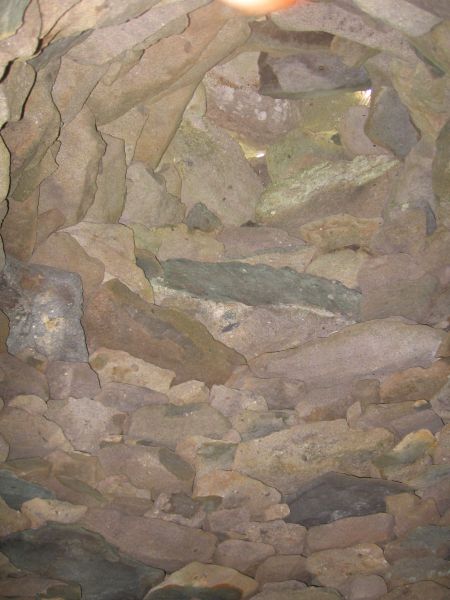
The early Christian settlements adopted the same construction style, including for their 'oratory' chapels.
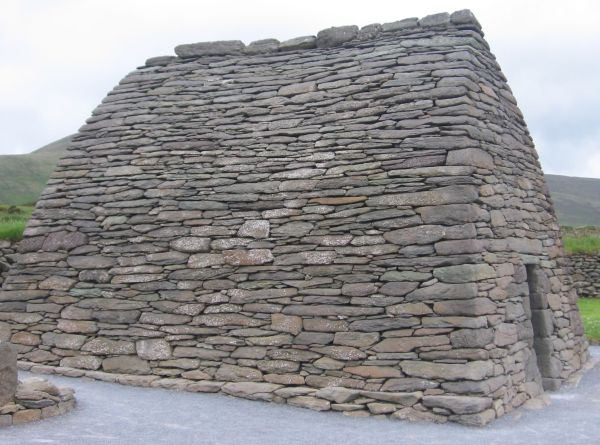
Dingle also includes some examples of the square castles that the Normans built after their invasion of Ireland.
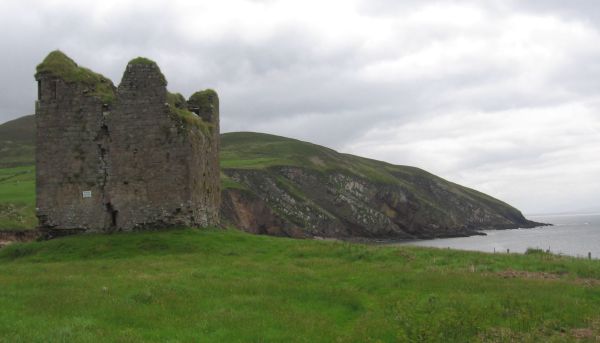
In a Dingle churchyard, you can also find an Ogham stone. The lines carved into the edge of the stone are an early alphabetic script, recording the Gaelic name of the person buried there.
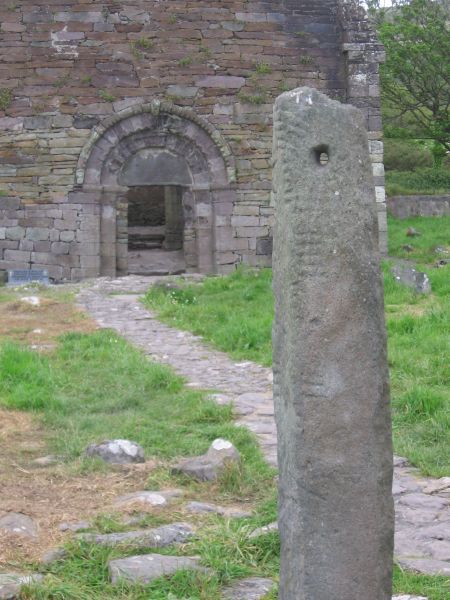
In the same churchyard, you can see an early sundial stone.
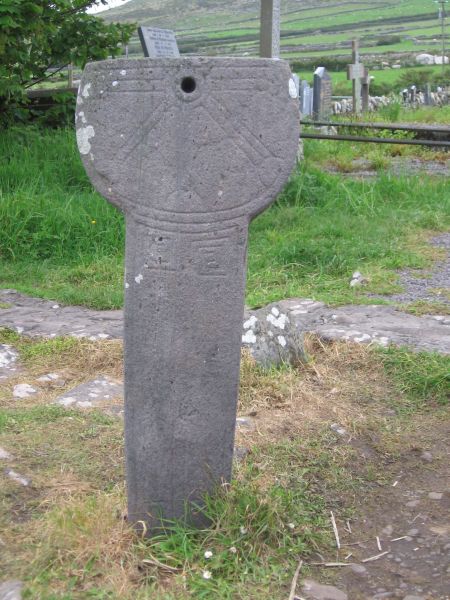
We also got some nice hiking in around Kerry. A national park there includes some old growth forest.
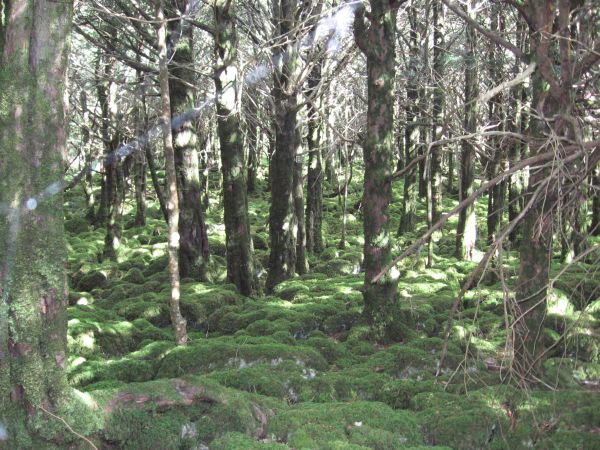
Rhododendrons have been planted around some Kerry estates, and their flowers look very nice in the woods, but they are sadly taking over the forest, forming dense thickets where no tree seedlings can sprout.
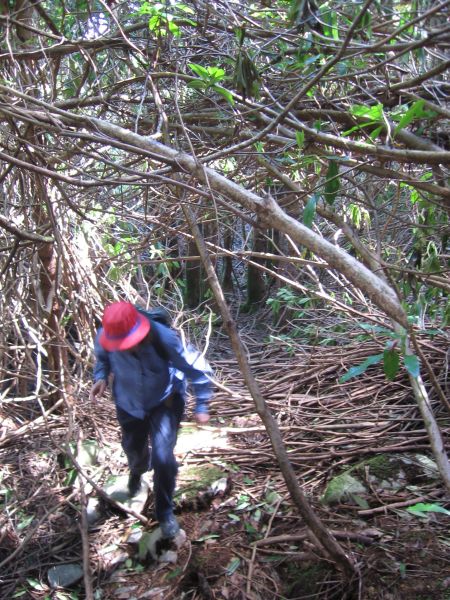
At higher levels, heather and moss replace the trees and rhododendrons.
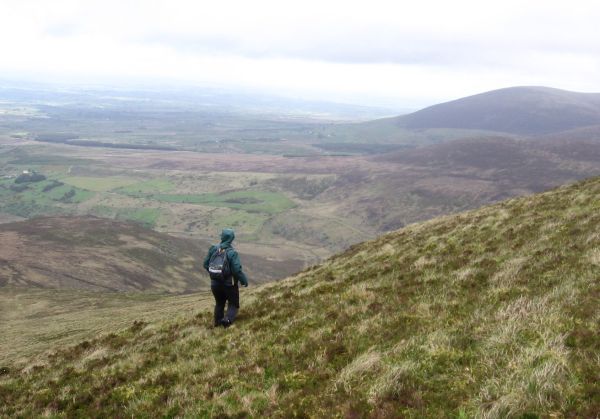
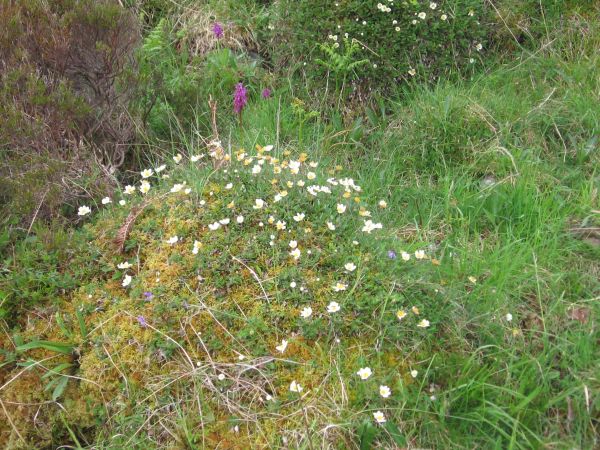
And, as always, very fine trails through mountain passes and lakes.
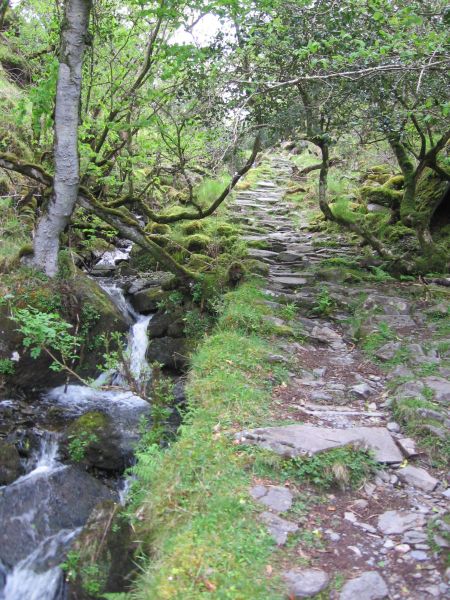
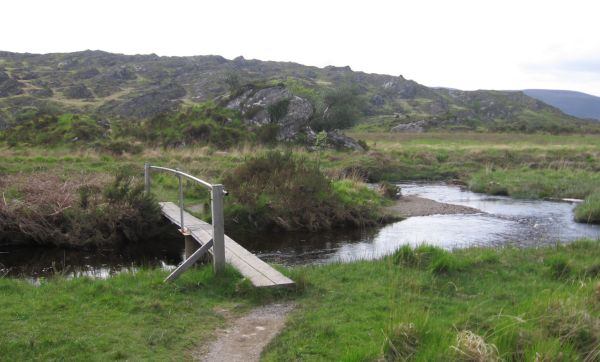
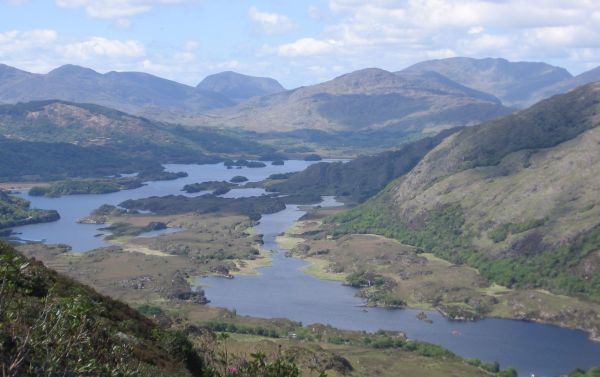
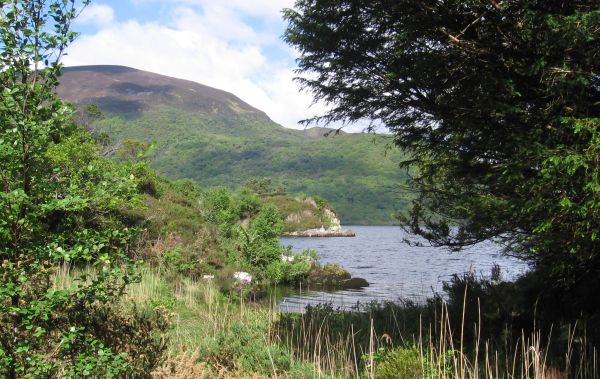
Back to ramshaw.info home page
Updated 2006-06-04